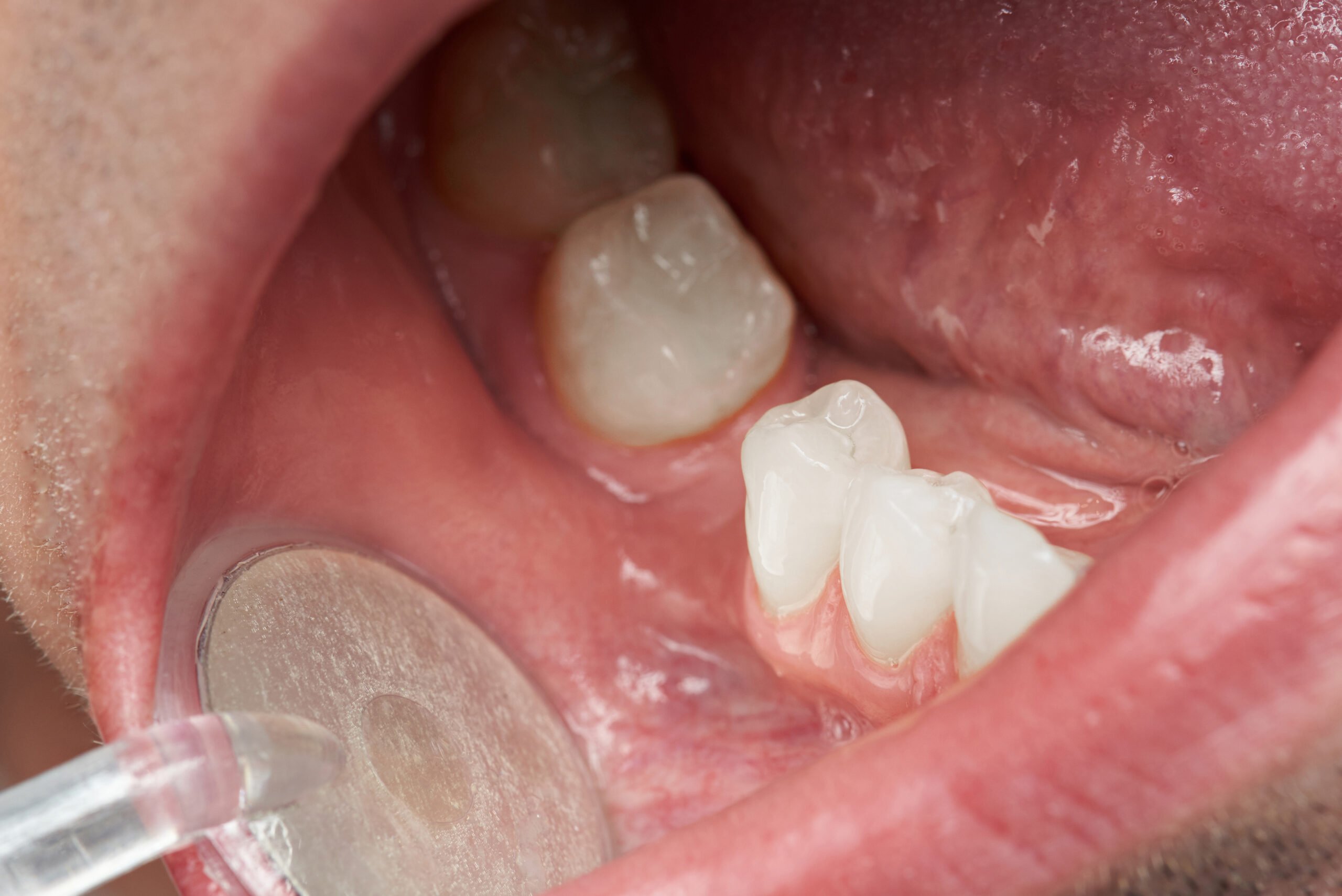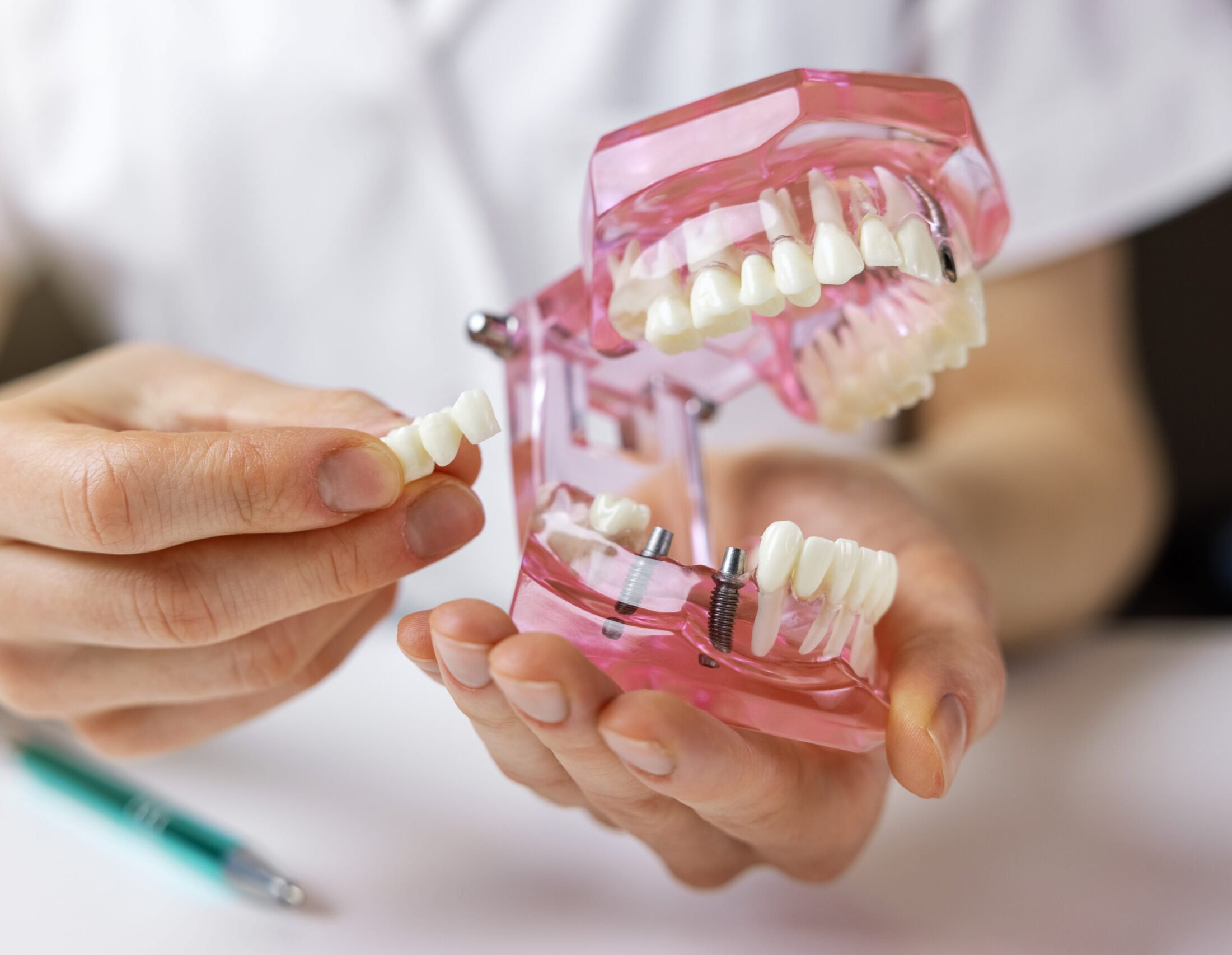A bridge is a restoration that replaces missing teeth and fills gaps in your smile. It uses the teeth on either side of the gap as support for the aesthetic replacement tooth acting as a bridge between them. Whether you have lost a tooth through an accident or if it has been extracted, bridges can be an effective and reliable solution.

It is important to replace missing teeth in your smile, not just because it can really affect confidence. Replacing teeth prevents the remaining teeth from shifting out of position, causing alignment issues. It also protects the otherwise vulnerable gums.
Bridges are a more secure alternative to partial dentures as they are fixed. We can also use a bridge in combination with implants to replace more than one missing tooth.
We first make sure that the teeth that will support the bridge are healthy and strong. They are then prepared by removing a layer of enamel.
We take scans of your teeth. These are sent to the dental laboratory. While your bridge is custom-made, we provide you with a temporary bridge to protect the exposed teeth.
When ready, we check your bridge, making sure it fits perfectly and making small adjustments if necessary. Your bridge is finally fixed in place with strong dental cement.

Conventional bridge
With a conventional bridge, usually the teeth either side of the gap are prepared, crowns are placed over the prepared teeth and these are attached to the artificial tooth (also called a pontic).
Adhesive (Maryland) bridges
Adhesive bridges require virtually no drilling of the teeth on either side of the gap to be filled and can be made with metal or ceramic wings (brackets) glued to hold the false tooth securely in place. They work best when the teeth next to the gap are perfect or have very small fillings in them. We have placed a lot of these and they work really well and are aesthetically very good. Much cheaper and easier than an implant, but they are not suitable for filling every gap. Please ask us for further advice.

You need to clean your bridge every day, to prevent problems such as bad breath and gum disease. You also have to clean under the false tooth every day. Your dentist or hygienist will show you how to use special floss, as a normal toothbrush cannot reach.
Although a bridge may seem costly they can be a wise investment that will give many years of good service. It will also improve your appearance and bite. A bridge uses the considerable skill of the dentist and technician, and in this way, it’s similar to ordering a piece of hand-made jewellery.
If bridges are well looked after, and that includes keeping the surrounding teeth healthy so they can continue to provide a solid foundation, they should last for over ten years.
The main alternatives to bridges for replacing missing teeth are partial dentures and dental implants. Bridges are seen as a more secure alternative to partial dentures, as they are fixed into place and will not move or slip. Implants are seen as superior in durability and aesthetics, but are more expensive. Bridges can be used in combination with implants to replace more than one missing tooth.
Bridges are made from porcelain fused to a metal base or from all-ceramic for an aesthetic finish.

